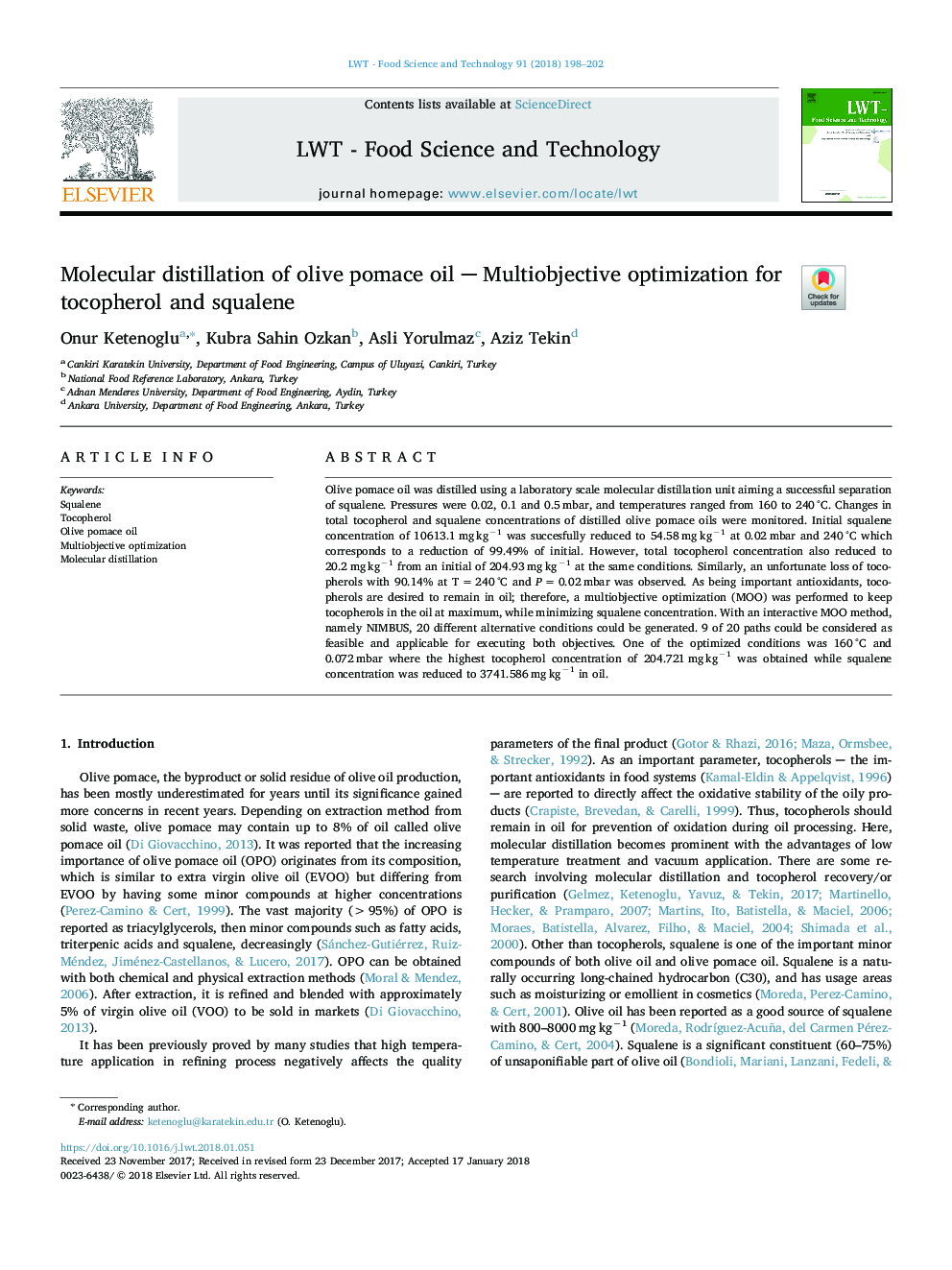| Article ID | Journal | Published Year | Pages | File Type |
|---|---|---|---|---|
| 8891575 | LWT - Food Science and Technology | 2018 | 5 Pages |
Abstract
Olive pomace oil was distilled using a laboratory scale molecular distillation unit aiming a successful separation of squalene. Pressures were 0.02, 0.1 and 0.5â¯mbar, and temperatures ranged from 160 to 240â¯Â°C. Changes in total tocopherol and squalene concentrations of distilled olive pomace oils were monitored. Initial squalene concentration of 10613.1â¯mgâ¯kgâ1 was succesfully reduced to 54.58â¯mgâ¯kgâ1 at 0.02â¯mbar and 240â¯Â°C which corresponds to a reduction of 99.49% of initial. However, total tocopherol concentration also reduced to 20.2â¯mgâ¯kgâ1 from an initial of 204.93â¯mgâ¯kgâ1 at the same conditions. Similarly, an unfortunate loss of tocopherols with 90.14% at Tâ¯=â¯240â¯Â°C and Pâ¯=â¯0.02â¯mbar was observed. As being important antioxidants, tocopherols are desired to remain in oil; therefore, a multiobjective optimization (MOO) was performed to keep tocopherols in the oil at maximum, while minimizing squalene concentration. With an interactive MOO method, namely NIMBUS, 20 different alternative conditions could be generated. 9 of 20 paths could be considered as feasible and applicable for executing both objectives. One of the optimized conditions was 160â¯Â°C and 0.072â¯mbar where the highest tocopherol concentration of 204.721â¯mgâ¯kgâ1 was obtained while squalene concentration was reduced to 3741.586â¯mgâ¯kgâ1 in oil.
Related Topics
Life Sciences
Agricultural and Biological Sciences
Food Science
Authors
Onur Ketenoglu, Kubra Sahin Ozkan, Asli Yorulmaz, Aziz Tekin,
